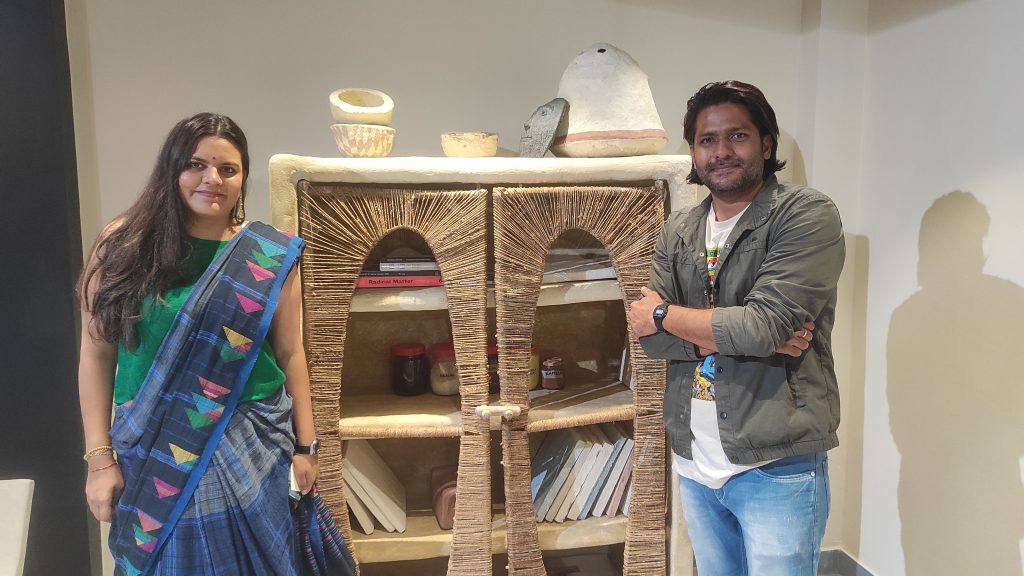Pulp Society hosted a captivating exhibition, ‘Pasti’. The exhibition showcased an array of mesmerizing creations, including hand-moulded functional objects made from reflective paper clay and an assortment of breathtaking works by SHED. These pieces invite viewers to fully immerse themselves in the sheer beauty of functional objects created solely from repurposed materials, presented in an exceptionally imaginative manner. Traditional Indian households have ingeniously developed practices to efficiently handle waste and refuse management.
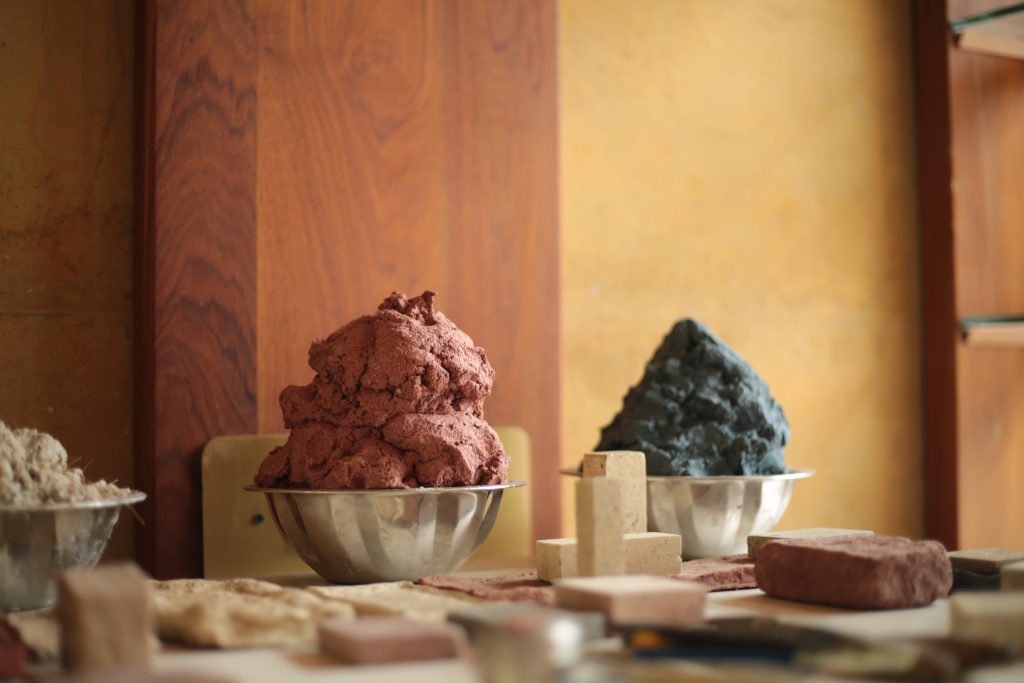
Their practice involves methodically collecting all the paper that accumulates over time, submerging it in water, and preserving it in a clay container. This method allows the fibres of the paper to gradually soften, making it easier to handle and recycle. After collecting a significant amount of pulp, the softened cellulose is then combined with adhesive clay to form a dough-like mixture. The mixture is thinly spread on the curved surfaces of earthen pots at home, resulting in complete coverage of the desired diameter. After a short period, the mixture solidifies and takes the shape of a beautiful, curved platter, detaching from the pot that moulded it. These exquisite platters serve as perfect storage for vegetables and fruits, keeping them safe from pesky rodents in the dry corners of a kitchen.
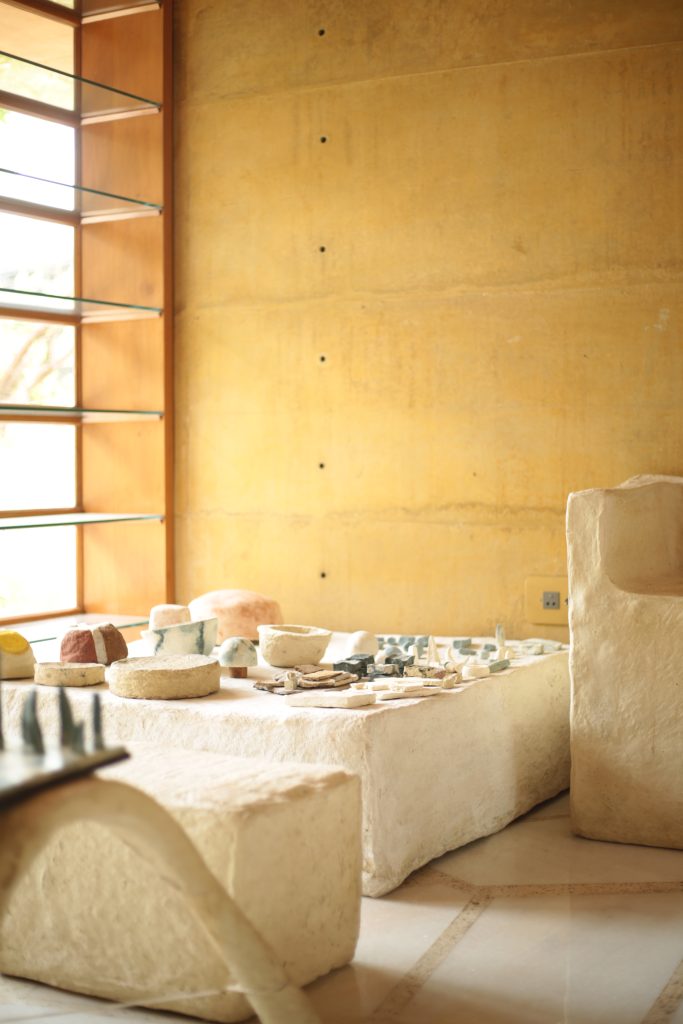
Many times, we tend to only focus on practical objects when decorating our homes. However, what we fail to consider are the artistic and creative aspects that, when combined, can truly elevate the overall purpose and aesthetic appeal of our living spaces. The works represent an exquisite fusion of design and art, captivating not only through touch and sight but also through an immersive experience that allows viewers to grasp and appreciate their functional elements. For instance, there’s a work which is like a ready-made room for playing chess. Not only does the work possess a functional purpose, but it also provides a wonderfully artistic experience. The wet mixture is applied by hand on the sturdy framework in layers. The material absorbs and captures the marks left on it, transforming and contorting as if it possesses a consciousness, while the powerful forces of nature slowly work their magic, causing it to dry and contract with time. As time passes, cracks begin to appear, forming delicate ridges and creating a unique texture. We can either embrace the natural beauty completely or refine it further by carefully sanding, taming, and smoothing it until it perfectly aligns with our vision. As the human hand repeatedly traverses these surfaces, a captivating sheen emerges, even on rough terrain, owing to the clay’s ever-present essence.
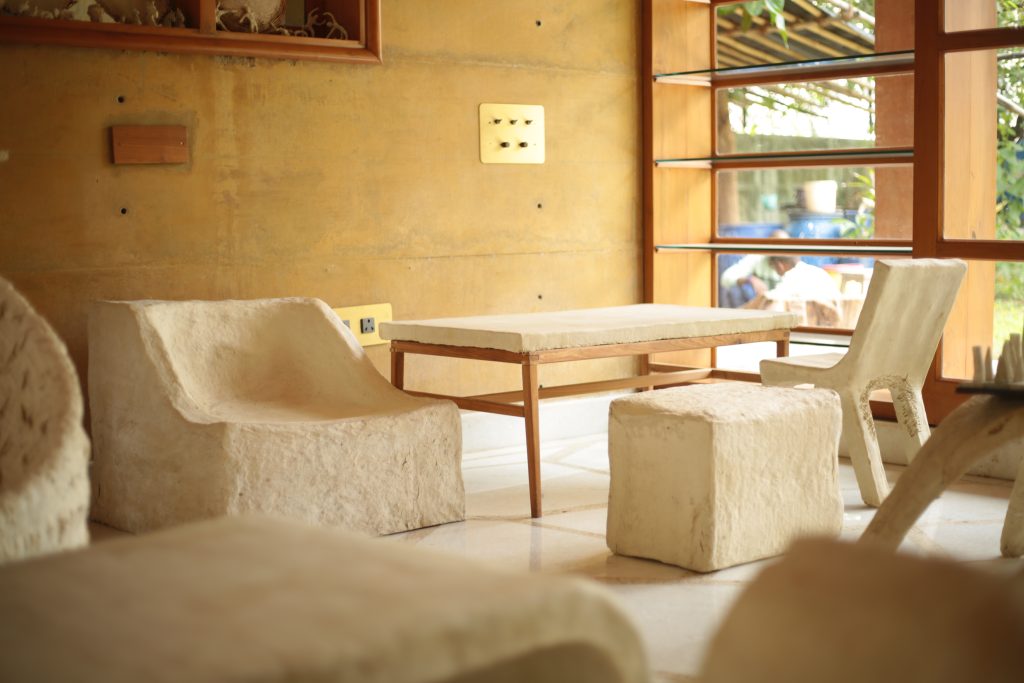
Imran shares his process, “The idea originated from the material itself, as it was familiar and easily moldable. So, our goal was to ascertain its practical applications in our everyday lives. We conducted experiments to gain insights, which eventually resulted in the creation of various objects and designs through a step-by-step approach. We aimed to comprehend how the material interacts with its surroundings and the nature of its relationship with us.” Imran further explains that the primary focus was on crafting functional objects. “Our objective was to determine the extent to which we could incorporate it into our daily lives. Through a series of experiments, we gradually developed a form and brought various objects and creations into being. We were attempting to grasp the interaction between a material and its presence in our surroundings, or attempting to understand its correlation with us. The main focus was on creating objects that serve a purpose. Our materials include waste paper and a binder, to which we add lime and sometimes pigment colours. What fascinated us was the cleverness of this domestic approach in its simplicity and how seamlessly it integrated into the natural cycles of a household (and the environment) without being energy-intensive. Indeed, it requires human effort, yet its reliance on other virgin resources is negligible.”
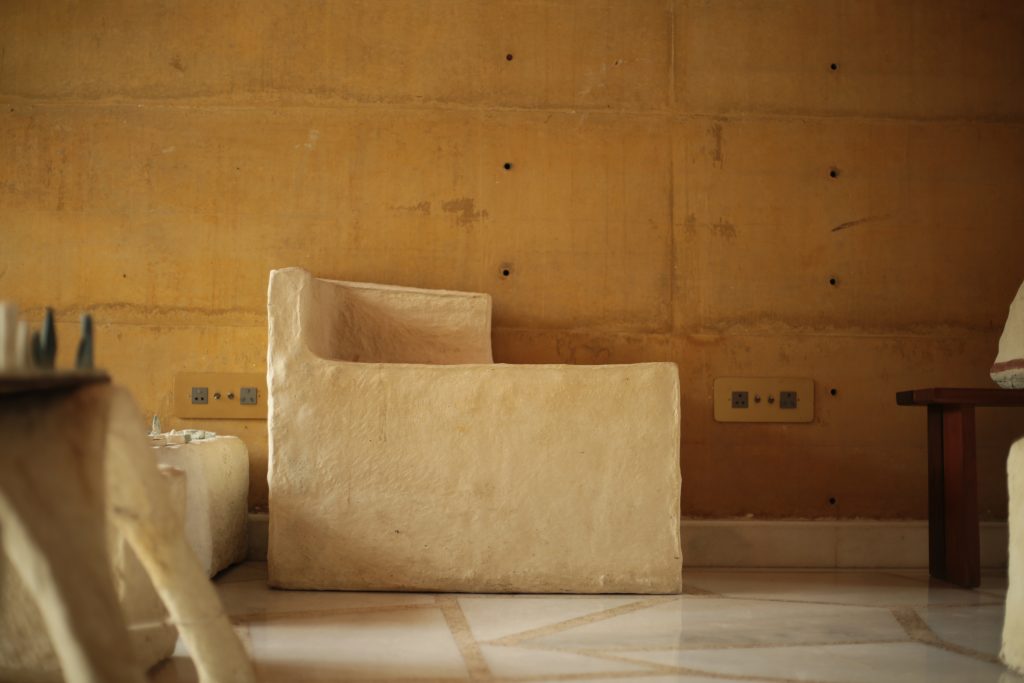
Priyanka reveals that during their initial conversations, “Imran was conducting independent research, and after our meeting, we collectively decided to elevate it to a studio level. This decision enabled us to access resources, bring in additional manpower, and effectively pursue our goals. This is where I entered the picture. What captured our fascination even more than the design itself was the invigorating process of brainstorming and strategizing how to effectively expand and construct a robust framework. How can we truly elevate our work? It all began with a small chair, just a humble 30 by 30 block. As our confidence increased, we boldly expanded our territory to a 40 by 40 block, delving into a multitude of diverse variations for this design. As we became more comfortable, we ventured into larger dimensions, pushing ourselves to create thinner structures without compromising their integrity. So, I believe it is an array of investigations into that mature topic; once we comprehended the potential of the material, it assisted us in posing all of these inquiries.”
Photo Courtesy – Pulp Society
Kerala Architect Vinu Daniel Featured in TIME100 Next List for Sustainable Design


